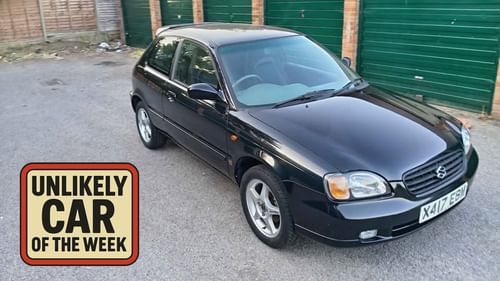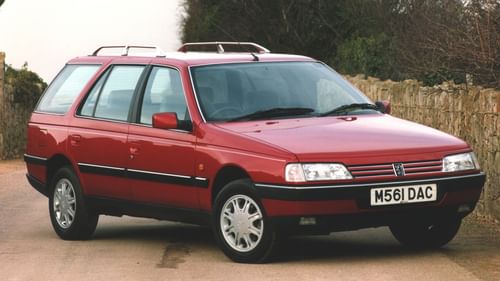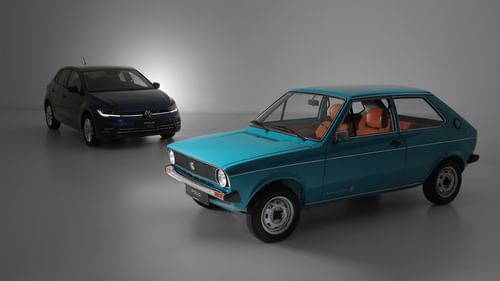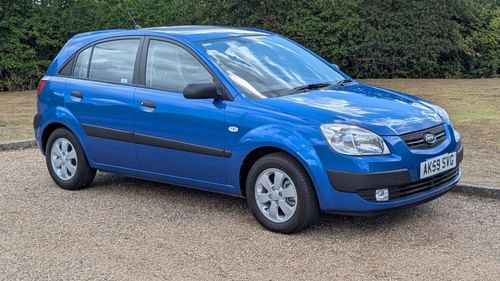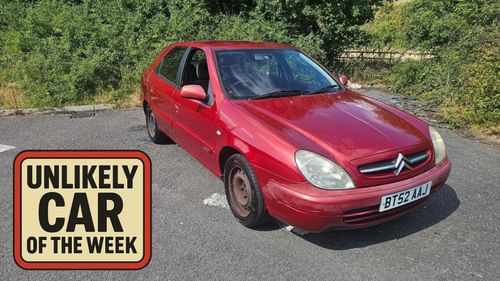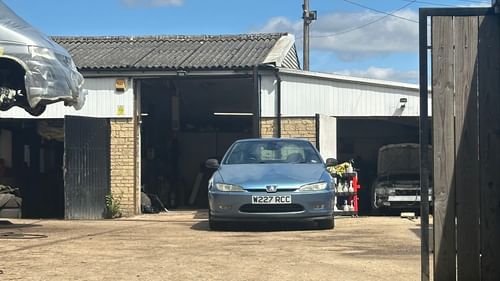The Volkswagen Passat W8 was an upmarket prelude to the Phaeton, Touareg and Veyron
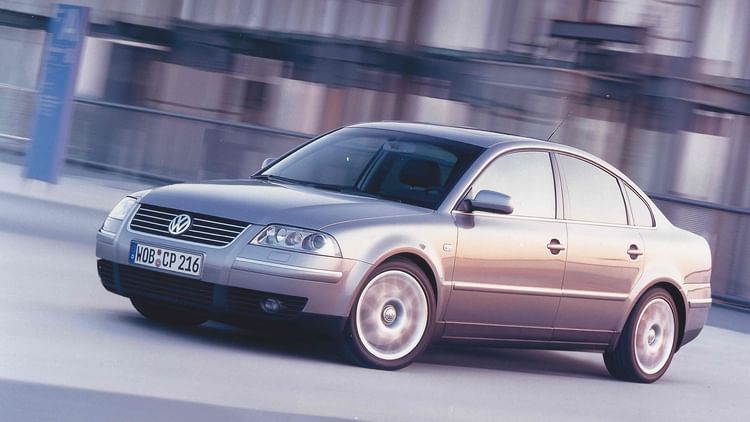
Ferdinand Piëch reportedly came up with the idea for a W engine while riding the long train runnin’ between Tokyo and Nagoya. Some would say the late CEO of Volkswagen must have been smoking a doobie if he thought the world would embrace the idea of a Volkswagen Passat with a 4.0-litre W8 engine. Still, what a fool believes, etc.
The former CEO was no fool. At Porsche, he designed the iconic 917 race car. As a consultant, he worked with Mercedes-Benz to develop the company’s first five-cylinder diesel engine for a passenger car. Moving to Audi, he launched the aerodynamic 100, introduced a five-cylinder petrol engine, transformed the humble Coupé into the all-conquering Quattro, developed galvanised and aluminium bodies, and laid the foundations for the company we know today. All of this was achieved before Piëch was installed as emperor of the Volkswagen empire.
A radical shakeup was required to save the ailing business. Using platform-sharing techniques he’d honed at Audi, Piëch cut costs, reduced engineering time and made the Group more profitable. Just three years into his reign, Piëch oversaw the introduction of the A4 (PQ34) platform which debuted in the Audi A3 before underpinning everything from the Mk4 Golf and Skoda Octavia to the Audi TT and Beetle. At a corporate level, Piëch added Bentley, Bugatti, Lamborghini and Porsche to the family tree, with the latter coming after VW had survived a takeover bid from the Stuttgart firm.
But for all his success, Ferdinand Piëch could drop the odd clanger. The Volkswagen Phaeton, Bugatti Veyron and Audi A2, though technically brilliant, resulted in huge losses for the Group, totalling a combined €5 billion, according to Bernstein Research figures. VW invested £120 million in a new ‘glass factory’ in Dresden to produce the Phaeton, as Piëch demonstrated his desire to push the company upmarket. ‘We must make it possible, for all those who want to move up, to actually move up. And there is no reason on earth for not doing so.’ No, not a line from M People’s 1993 smash hit, but a direct quote from Piëch at the launch of the Passat W8 in September 2001.
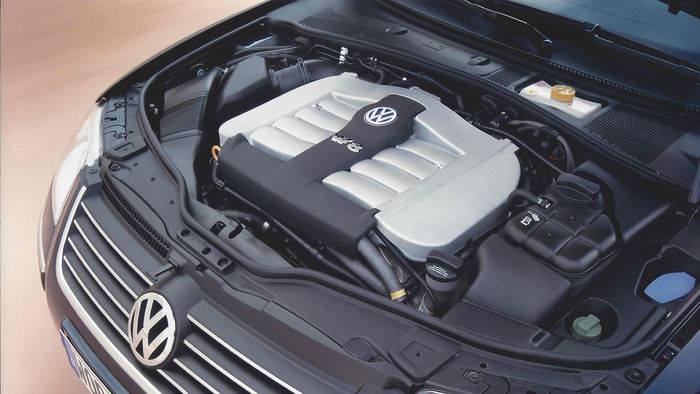
Four years earlier, Piëch was on the Shinkansen ‘bullet’ train in Japan. His shot of inspiration followed a discussion with Karl-Heinz Neumann, the head of powertrain development at Volkswagen. He grabbed an envelope and sketched out an idea that had been rolling around in his head for a while: by marrying a pair of VR6 engines in a further ‘V’, a compact 12-cylinder engine could be built. The offset cylinders of the merged VR6 engines formed a ‘W’, hence the nomenclature. The visionary went further, imagining an 18-cylinder engine comprised of three VR6 engines, configured in a tilted double-W shape. The naturally aspirated 6.25-litre W18 engine produced 555 raging horses; all that was required was a stable for this new block. It debuted in the Giorgetto Giugiaro-designed Bugatti EB 118 concept of 1998, which featured the permanent four-wheel-drive system from the Lamborghini Diablo VT. Eventually, this would evolve into the Bugatti Veyron, its W16 engine essentially two V8 joined at a 90-degree angle.
The Passat B5 is one of Piëch’s less celebrated achievements. Launched in 1973, the Passat was one of Volkswagen’s first front-wheel-drive production cars, but it wouldn’t find its feet until the arrival of the B5 in 1996. This was the first entirely new VW to be developed under the watchful eye of Piëch, who shifted the Passat away from Golf-based architecture to a platform shared with the Audi A4. This was a big deal. With subtle hints of J Mays’ Concept 1 in the styling, Audi levels of quality and a superb interior, the B5 edged the Passat away from the mainstream and to the edge of the premium territory dominated by Audi, BMW and Mercedes-Benz. A flagship 2.8-litre V6 with four-wheel drive sat at the top of the range, as the Passat squared up to the four rings and the famous quattro drivetrain. Before long, the B5 had propelled the Passat to the sales big league, both in Europe and North America; a mainstream family car with premium aspirations. For many people, that would be enough, but Piëch was dreaming of a new ‘upper range’ of cars. There was no time to W8ste.
A subtle facelift in 2000 created the Passat B5.5, which formed the basis for one of most unlikely and ambitious cars of the decade: the W8. ‘Passat is the most successful car in its class for the last five years, and it has all the qualifications to meet success in the upper regions of the market,’ Robert Büchelhofer, VW board member for sales and marketing, said in 2001. Even with the benefit of hindsight, the idea of a Passat encroaching on a market dominated by the premium German brands seems wildly optimistic. A car can look, feel and behave like an upmarket car, but the ‘wrong’ badge won’t cut it in the office car park or on the outside lane of the autobahn. Even a Passat with the company’s first eight-cylinder engine is still a Passat. Volkswagen harboured dreams of selling 10,000 W8s a year, but overall sales hit the rocks at just 11,000 before Volkswagen pulled the plug in 2004. A poor return investment following a €50m spend on the engine and the same amount on the car. Still, that’s a drop in the ocean in the context of the €1.99bn spent on the Phaeton luxo-barge.
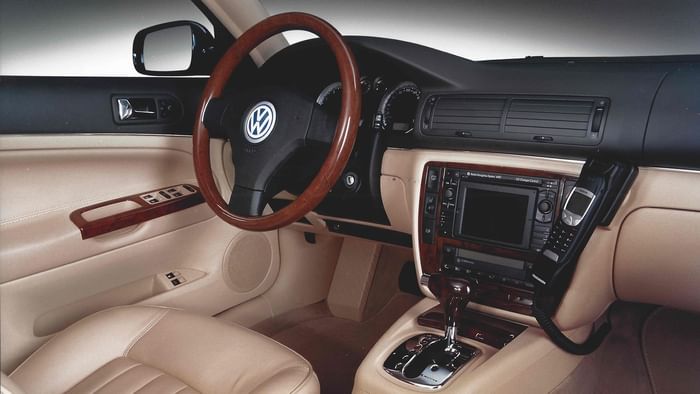
We can view the Passat W8 as a sort of automotive sacrificial lamb: a prelude to the Phaeton and a teaser for the Touareg. Ferdinand Piëch said as much at the time of its launch: ‘The Passat W8 will not remain for long the only model in the new Volkswagen upper range. Our programme in this class will in future comprise four elements. The Passat W8 will be joined – in the chronological order of their scheduled launch – by a new luxury saloon [Phaeton], an exciting off-road vehicle [Touareg] and a super-sports car [Bugatti Veyron].’ At £30,000 for the saloon and £31,000 for the estate, the W8 was comfortably the most expensive Passat you could buy; the range topped out at around £22,500 for the 2.5 V6 TDI estate. Caravelle aside, the £30k+ Volkswagen passenger vehicle didn’t exist, but by the summer of 2003, you could buy a £50k Touareg and a £70k Phaeton. The difference being these cars shared a platform with more illustrious rivals, the Touareg with the Porsche Cayenne, the Phaeton with the Bentley Continental GT.
It would be unfair to dismiss the Passat W8 as little more than family saloon with a monstrous powerplant shoehorned into its engine bay. Improved torsional rigidity came courtesy of pinpointed reinforcements throughout the structure, while a Torsen permanent four-wheel drive system was on hand to harness the engine’s 275bhp output. The styling makeover was subtle to the point of being almost invisible. Twin chrome exhaust pipes on either side, additional chrome strips below the rear light clusters, 17-inch ‘Madras’ alloy wheels, bi-xenon headlights and W8 badges were the blink-and-you’ll-miss-them highlights. Inside, the speedo was calibrated to 300kph/180mph, although the top speed was limited to 155mph. There were a few interior enhancements, but the W8 looked to all intents and purposes like the Passat driven to work by Steve from sales, not the ‘half a Veyron’ upper range performance saloon of your dreams. Standing by the water cooler explaining the complexities and engineering greatness of a W8 engine is unlikely to impress Melanie from marketing. Little wonder Volkswagen didn’t expect to shift more than 300 a year in the UK; sales limped to around 220, according to DVLA figures. You don’t need Colin from accountants to tell you that’s a miserable return on investment.
For Volkswagen, or rather Ferdinand Piëch, the fact that it shifted 75,000 Passats with a V6 engine in 2000 was sufficient evidence to suggest that the W8 would succeed. The problem was, the W8 wasn’t significantly faster than the 2.8-litre V6 4Motion, which could hit 62mph in 7.8 seconds before topping out at 144mph. At 6.5 seconds, the W8 with a manual gearbox was quickish, but versions equipped with the Tiptronic transmission laboured to 62mph in a disappointing 7.8 seconds. In other words, a six-cylinder Passat was just as fast, cheaper and more economical. Heck, even a £20k six-cylinder Bora would rival a Passat. CAR said the six-speed manual version ‘goes well enough’, but described the five-speed auto as ‘smooth’, but with the ability to ‘leave you red-faced when overtaking’. A senior engineer reportedly said, ‘The auto is s**t,’ at the first drive in Germany. He had a point: the automatic has a reputation for going pop at around 70,000 miles.
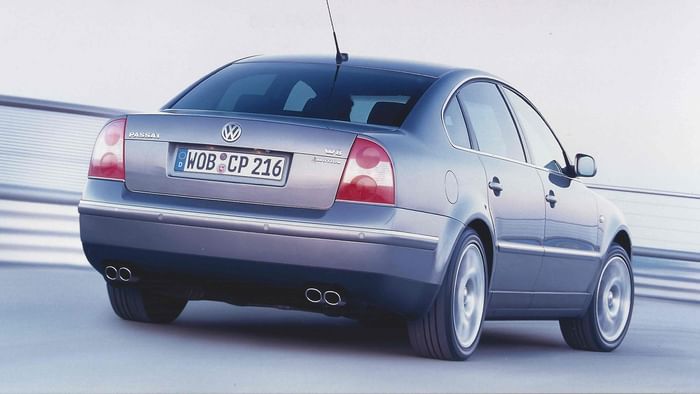
The W8 didn’t feel exciting enough for a car with a 3999cc, 32-valve engine under the bonnet. Worse still, the W8 offered neither the low-end grunt nor the top-end thrills of an eight-cylinder saloon, with an accompanying soundtrack more akin to that of a six-cylinder car. In some ways, the Passat W8 is the new millennium equivalent of the Lancia Thema 8.32. Two cars that look great on paper – and for attracting a crowd at a car meet – but are strangely overshadowed by their six-cylinder siblings. Equally, cars that would be welcome in many ‘dream garages’, with the capacious boot filled with a lifetime supply of brave pills. It speaks volumes that a Passat W8 available at the time of writing had been on sale for at least 15 months. The advert reads: ‘The gearbox [has] been rebuilt which is [a] common issue on the W8’. They all do that, sir.
Where does all of this leave the Passat W8 in the big book of motoring follies? On the one hand, it’s a classic Piëch car: a shot to nothing and an expensive waste of resources. A car nobody asked for and nobody really got. Even in the US, the land of cheap gas and straight roads, sales fell below VW’s target of 5000 units annually. Just 2182 Americans took the plunge in 2003, the car’s last full year of sales. Audi shunned the W8 for the S4, favouring a turbocharged V6, while plans to use the engine in the Phaeton, Touareg and Skoda Superb came to nothing. Even a 275bhp Golf R40 was mooted.
Volkswagen will argue that the W8 succeeded as a flagship of the Passat range and paved the way for Phaeton W12 that debuted in 2002. Both claims are at best dubious, not least because the ‘Phat’ Passat was hardly a runaway success.
Two decades on, the Passat W8 remains a forbidden fruit. How many of us have lingered over the ‘bid’ button while looking at a temptingly cheap W8 on eBay? After all, it’s an understated 4.0-litre saloon with a link to both the Bugatti Veyron and Volkswagen Phaeton. If you judge a car by the company it keeps, the W8 should be your BFFL, M8.
This article first appeared in issue 11 of Classic.Retro.Modern. magazine.
